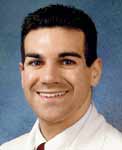- Case-Based Roundtable
- General Dermatology
- Eczema
- Chronic Hand Eczema
- Alopecia
- Aesthetics
- Vitiligo
- COVID-19
- Actinic Keratosis
- Precision Medicine and Biologics
- Rare Disease
- Wound Care
- Rosacea
- Psoriasis
- Psoriatic Arthritis
- Atopic Dermatitis
- Melasma
- NP and PA
- Skin Cancer
- Hidradenitis Suppurativa
- Drug Watch
- Pigmentary Disorders
- Acne
- Pediatric Dermatology
- Practice Management
- Prurigo Nodularis
- Buy-and-Bill
Article
Fat-fighting injectables prove efficacious in recent studies
Fat will be a major focus for research and development for both therapeutic drugs and medical devices in the coming years, and the next generation of treatments are sure to be minimally invasive, according to one dermatologist who spoke at Cosmetic Surgery Forum 2010, held in Las Vegas in December.

Key Points


ATX-101
Dr. Rotunda says ATX-101 has achieved very good results in Food and Drug Administration (FDA) phase 2 trials for submental fat. Specifically, he reports that investigators have completed two international, multicenter, double-blinded, placebo-controlled trials with a total of 155 patients. In combined analysis, all doses of the product (1, 2 and 4 mg/cm2 ) achieved significant improvement versus placebo based on physicians' assessments, Dr. Rotunda says.
Kythera's research has shown that after four sessions, "This product produces significant and long-lasting effects, with only mild to moderate localized adverse reactions," he says. In the phase 2 trials, he says, these included transient swelling, redness, tenderness, numbness, bruising and induration.
Overall, Dr. Rotunda emphasizes that ATX-101 provides significant but modest results.
"It's not a replacement for liposuction - it's best for small pockets of fat." Equally important, he says, is the fact that ATX-101 contains a new, purified form of deoxycholate.
According to Dr. Schlessinger, "The most exciting news about deoxycholate is that it is now available from a synthetic source" rather than cow bile. When deoxycholate was only available from animal sources, he says, "There were concerns over whether purity could be established. But with the isolation of a synthetic derivative of deoxycholate, the benefits are enormous. The quality and reproducibility of the preparation are much more attainable."
For 30 years, Dr. Schlessinger says, practitioners worldwide have been using phosphatidylcholine-deoxycholate (PC/DC) for mesotherapy injections intended to eliminate unwanted fat. However, "Mesotherapy has garnered a less-than-savory reputation due to some well-known side effects," such as infections, granulomas and tissue necrosis. Therefore, several countries, including Brazil, have banned mesotherapy, he says. Moreover, Dr. Schlessinger says recent studies have shown that the active ingredient of PC/DC is actually deoxycholate; phosphatidylcholine alone has no lipolytic activity (Duncan D, Rubin JP, Golitz L, et al. Clin Plast Surg. 2009;36(2):195-209, v-vi; discussion 211-213).
Dr. Rotunda says, "Deoxycholate works by lysing fat cells, which ablates or permanently destroys the fat. We are already familiar with how detergents are used in sclerotherapy, yet with the aim of eliminating veins."





